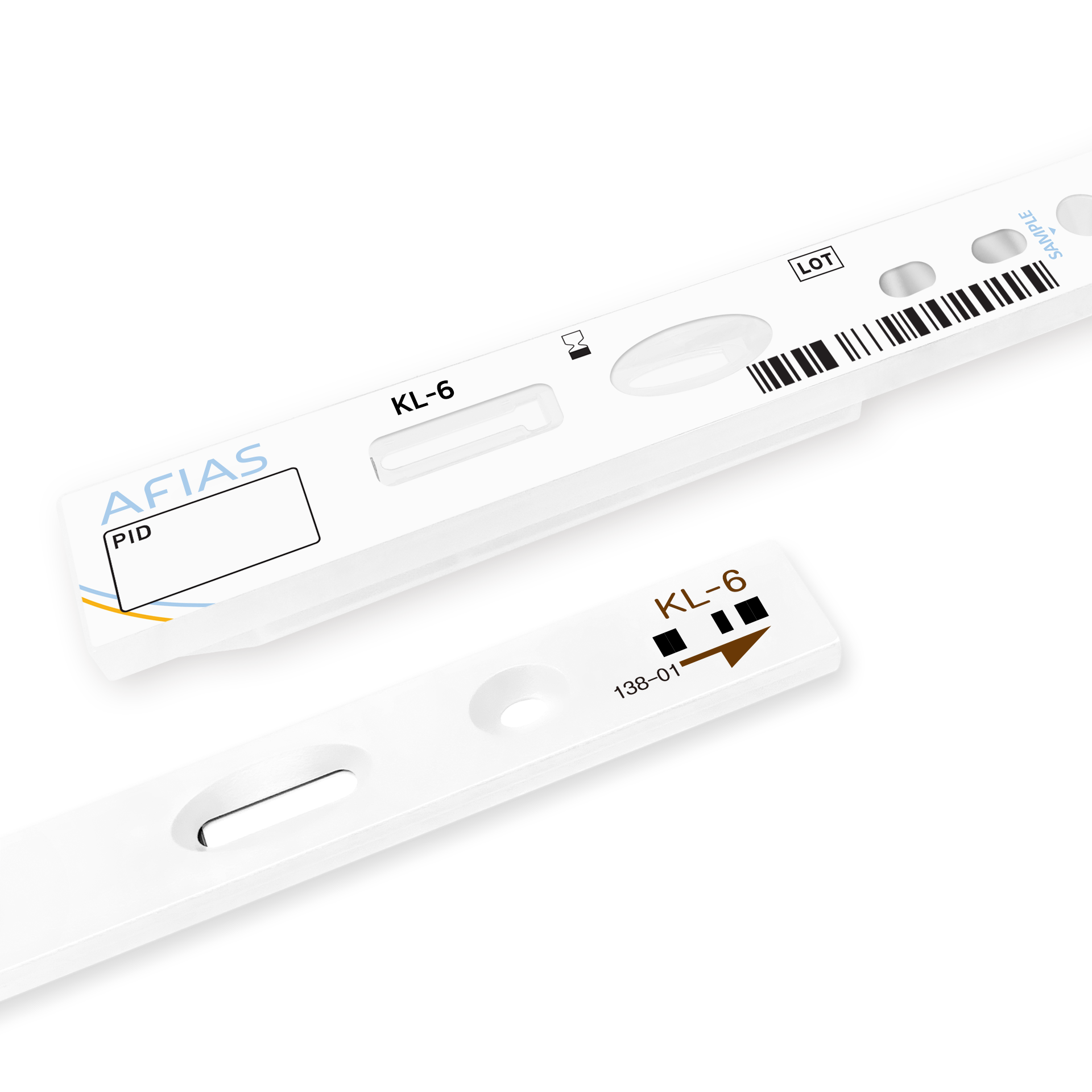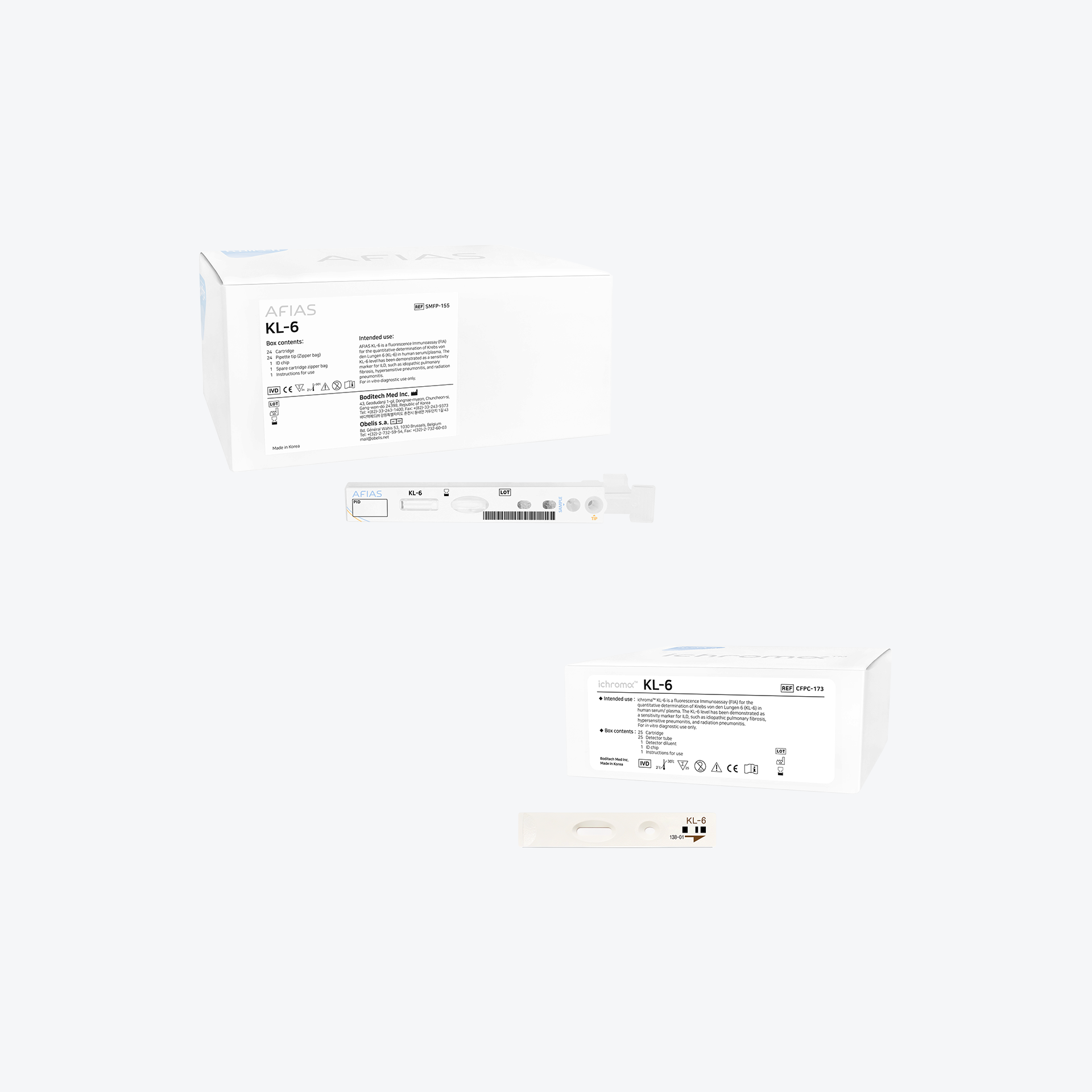KL-6
Supporting to diagnose interstitial lung disease & pulmonary fibrosis with a non-invasive method
Interstitial lung disease (ILD) is an umbrella term used for a large group of diseases that cause scarring (fibrosis) of the lungs. The scarring causes stiffness in the lungs which makes it difficult to breathe and get oxygen into the bloodstream. KL-6 can help diagnose and monitor lung damage from ILD from time to time with quantitative results.
- Diagnosis diseases
- Interstitial Lung Disease
Available Instruments
About Using Reagent
-
Sample Types
Serum, Plasma -
Reaction Time
10 mins -
Detection Range
51-3,000 U/mL -
Indication
Interstitial Lung Disease, Pulmonary Fibrosis
In Your Medical Field
KL-6 is a valuable biomarker used in respiratory diseases, particularly in pulmonary fibrosis (ILD). It detects fragments of MUC1, a protein produced in the lungs. The usefulness of KL-6 lies in its ability to aid in the diagnosis and monitoring of pulmonary fibrosis (ILD). One of the key advantages of using KL-6 is that it provides a non-invasive method for diagnosing pulmonary fibrosis. It indicates that there is no need for invasive procedures, such as surgery or biopsy, which can be inconvenient and even risky for patients.








